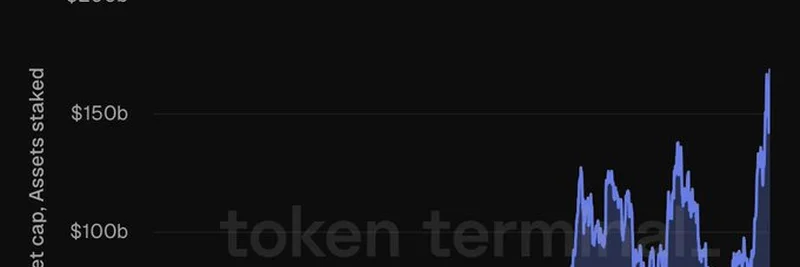In the ever-evolving world of cryptocurrency, Ethereum continues to dominate the staking scene. A recent tweet from Milk Road Daily highlights a staggering milestone: there's approximately $170 billion worth of ETH staked right now. Out of that massive figure, about $42 billion is handled through Lido Finance, a popular liquid staking protocol. That means roughly one in every four staked ETH is under Lido's umbrella. It's a testament to Ethereum's growth, but it also sparks conversations about decentralization versus concentration in the blockchain space.
For those new to the term, staking involves locking up your cryptocurrency – in this case, ETH – to support the network's operations, like validating transactions. In return, you earn rewards. Ethereum shifted to a proof-of-stake model back in 2022 with "The Merge," making staking a core part of its security and efficiency. Platforms like Lido make this process easier by offering liquid staking, where you deposit ETH and get a token like stETH in return. This lets you keep using your assets in DeFi (decentralized finance) while still earning staking rewards, without the usual 32 ETH minimum or lock-up periods.
The tweet points out an interesting duality: Ethereum is decentralized by design, with thousands of validators spread across the globe. Yet, having such a large portion controlled by one protocol like Lido raises eyebrows. Is this concentration a risk? Potentially, if Lido faces issues like smart contract vulnerabilities or governance disputes, it could impact a significant chunk of the staked ETH. On the flip side, Lido's popularity stems from its user-friendly approach and strong track record, distributing stakes across multiple node operators to mitigate centralization risks.
Looking deeper, this data underscores the rapid adoption of staking in Ethereum's ecosystem. From humble beginnings, the staked amount has ballooned, reflecting growing confidence in ETH's long-term value. For meme token enthusiasts and blockchain practitioners, this is crucial because many meme coins build on Ethereum or its layer-2 solutions. A robust staking layer means better network security, lower fees over time, and more opportunities for yield farming – all of which can fuel the next wave of meme token hype.
If you're diving into staking, consider diversifying across protocols to spread risk. Alternatives like Rocket Pool or Coinbase's staking services offer similar benefits with potentially less concentration. Keep an eye on updates from sources like Milk Road Daily for the latest insights.
As the crypto landscape matures, balancing innovation with true decentralization will be key. This $170 billion milestone is just the beginning – what's next for Ethereum staking? Stay tuned to Meme Insider for more breakdowns on how these trends intersect with the wild world of meme tokens and blockchain tech.


